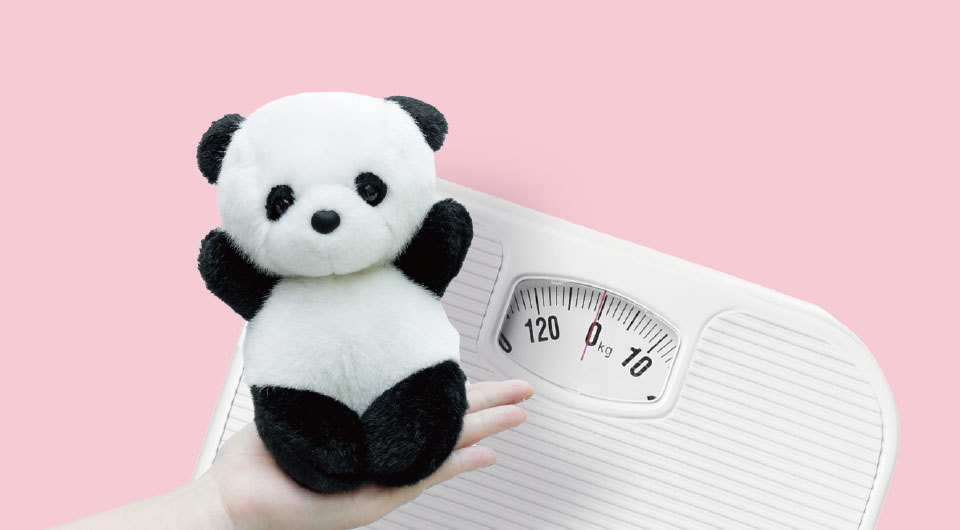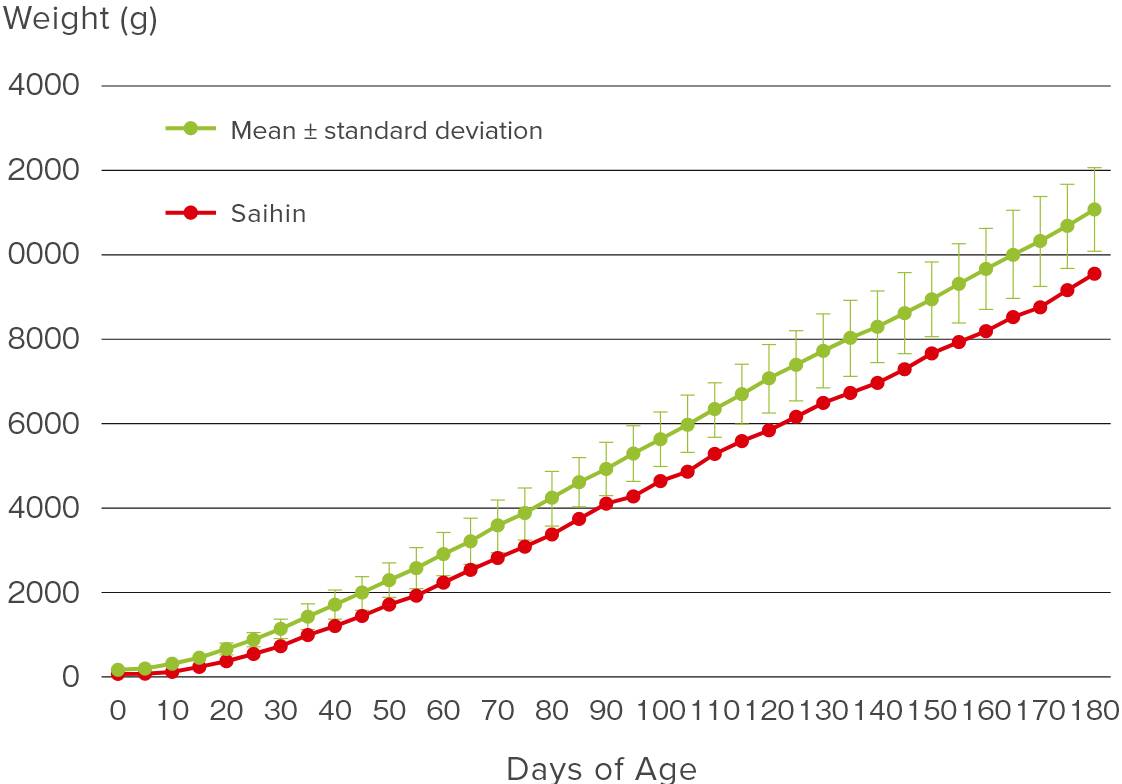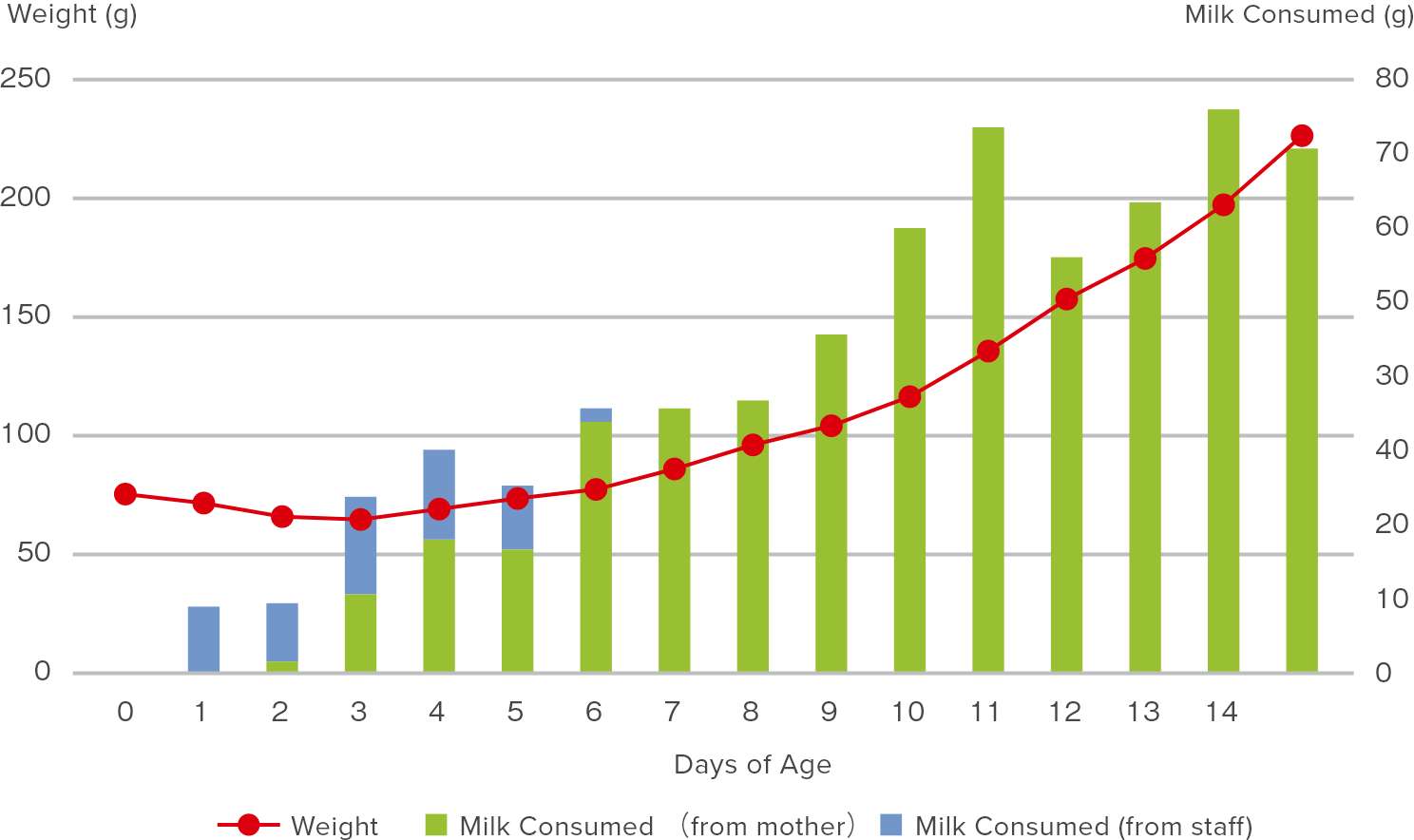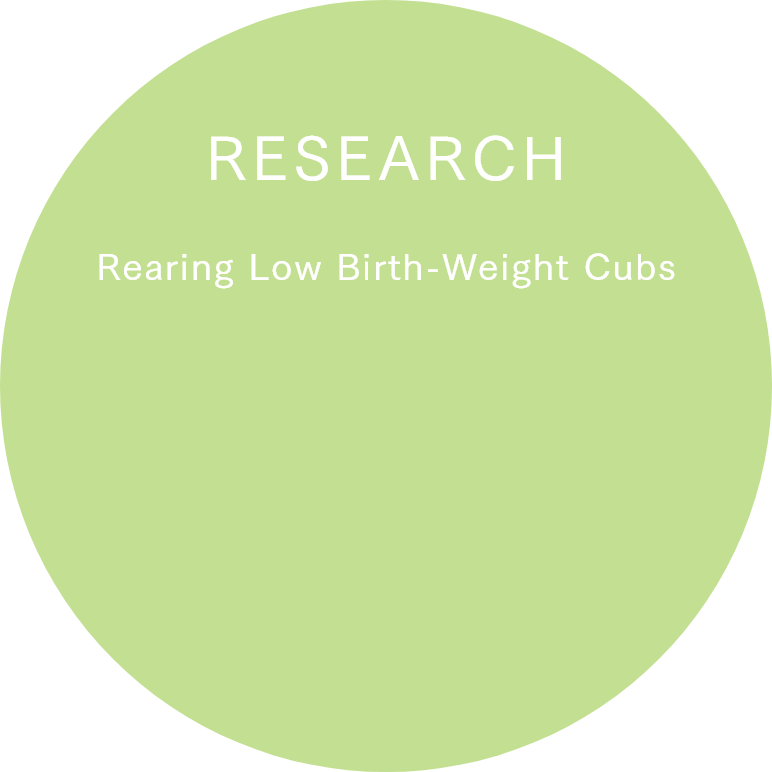

The average weight of newborn panda cubs from 2000 through 2020 is 156.8 grams. The Chengdu Research Base of Giant Panda Breeding has seen rare cases of rearing newborns with low birth weights—51 grams in 2006 and 42.8 grams in 2019, but the mortality rate is generally high for cubs born weighing less than 100 grams. At our park we have had a case of a newborn cub weighing 75 grams and with a body temperature of 31.5°C in August, 2018. Thanks to the cooperation of Japanese and Chinese staff in caring for the mother (Rauhin) and cub (Saihin), we were successfully able to raise the cub despite these hurdles.
List of Birth Weights at Adventure World
| Individual Name | Birth Weight | Mother | |
|---|---|---|---|
| 2000 | Rauhin | 195 g | Meimei |
| 2001 | Yuhin | 190 g | |
| 2003 | Ryuhin | 160 g | |
| Shuhin | 106 g | ||
| 2005 | Kouhin | 180 g | |
| 2006 | Aihin | 196 g | |
| Meihin | 84 g | ||
| 2008 | Meihin | 194 g | Rauhin |
| Eihin | 116 g | ||
| 2010 | Kaihin | 158 g | |
| Youhin | 123 g | ||
| 2012 | Yuhin | 167 g | |
| 2014 | Ouhin | 181 g | |
| Touhin | 186 g | ||
| 2016 | Yuihin | 197 g | |
| 2018 | Saihin | 75 g | |
| 2020 | Fuhin | 157 g |
|
| Mean ± standard deviation | 156.8±40.8 g |
Changes in weight of Saihin
-

*Average: The average weight of cubs born from 2000 through 2020 (n=17)
-
Saihin's body temperature was a low 31.5°C after birth, and was too weak to drink its mother's milk on its own. When Saihin's cries were no longer heard around nine hours after birth, the cub was taken from its mother and placed in an incubator. With a low body temperature of 33.4°C, the cub showed weak breathing and heartbeat, so oxygen was pumped into to the incubator and a cardiotonic was administered. Around one hour after these measures had been taken, the cub's breathing and heart rate stabilized, and after three hours its body temperature rose to 36°C. In the early stages of care, feeding enough milk to the cub, keeping a stable body temperature, and maintaining the mother's mental well-being were given great attention.
1. Feeding Enough Milk
In order to secure enough milk for the cub and keep it warm, it was returned to Rauhin only when being fed, and kept in the incubator otherwise. Because Saihin was too weak to drink naturally, the staff expressed milk from its mother and gave it via syringe. Staff also worked to lead Saihin to come close to the breast of Rauhin so that it can suck milk on its own, recording a successful attempt at 2 days of age and full ability at 7 days of age. At 6 days of age Saihin reached 77 grams, surpassing its birth weight, and began to steadily, if slowly, gain weight.
Weight and Volume of Milk Consumed

2. Stable Body Temperature
Seven hours after birth, the cub was given to Rauhin for an hour, but after a 2.1°C drop in body temperature, the cub was kept inside an incubator at all times other than short periods of being fed by its mother. However, later we found that the duration of time spent with the mother did not necessarily correlate to a drop in body temperature, and that the way in which the mother held the cub was a key factor. The incubator was initially set to 37.5°C and this was reduced slowly as the cub's body temperature and respiratory rate improved. A drop in body temperature was seen each time the cub was returned to its mother, but the extent of the drop began to decrease by around 11 days of age. By 18 days of age, with a weight of over 300 grams, the cub was able to keep a body temperature of 35°C even after one hour of time with its mother. From that point on, the cub faced no significant issues, and grew much like any other panda cub.
3. Maintaining Mental Well-Being of Mother
Maintaining the mental health of the mother, Rauhin, was also important. Giving birth six times from 2008 through 2018, Rauhin's attachment to her cubs was very strong, and whenever Saihin was returned to her, she immediately took the cub into milking position and cared for its excrement. Whenever Saihin was taken away, she would grow anxious and search for the cub. In order to calm Rauhin, whenever the cub was taken away, she was moved from the delivery room and placed in a separate room which was dark and quiet inside. There was concern that she might abandon caring for the cub and begin producing less milk due to the cub being away for long periods of time, but neither was true for Rauhin.
